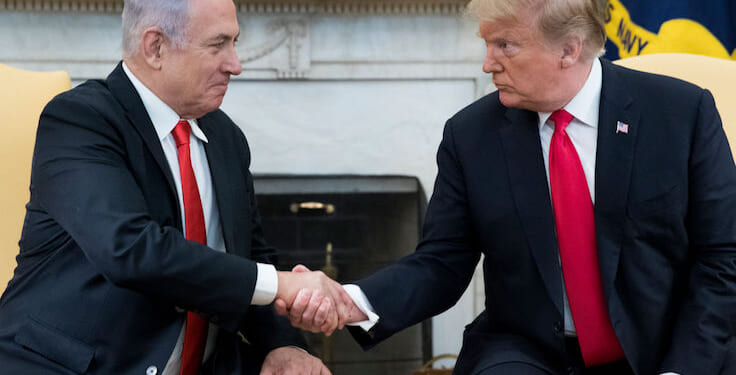Jonathan Schanzer of the Foundation for Defense of Democracies told the Free Beacon that Hamas may be stalling for time in hopes of maintaining power

Israel and Hamas on Monday met in Egypt to begin intensive negotiations to finalize a U.S.-backed peace accord that will end the war in Gaza, free the remaining hostages, and set the stage for an international coalition to assume control of the coastal territory. President Donald Trump said the talks should conclude later “this week,” but urged Hamas to “move fast” or face “massive bloodshed.”
Significant gaps still remain even as the two parties work within the terms of Trump’s 20-point peace plan, which requires Hamas to fully disarm and abdicate its rule over Gaza. The terror group on Sunday reportedly agreed to hand over its weapons “to a joint Palestinian-Egyptian committee under international supervision,” but the veracity of the terror group’s assertion is unclear, as is the degree to which it satisfies U.S. and Israeli demands.
Trump said on Sunday that the discussions are “proceeding rapidly,” even as they drag well past the president’s initial deadline of 6 p.m. EDT that same day. Trump signaled he will not wait much longer, saying in a Truth Social post that “time is of the essence or massive bloodshed will follow.”
Trump also wrote on Truth Social that Middle East envoy Steve Witkoff is in the region “to help work through and clarify the final details,” though those details still remain fuzzy as of Monday afternoon. Israeli prime minister Benjamin Netanyahu said he expects a deal to take shape by Thursday, potentially setting the stage for the 48 remaining hostages to return home within the following 72 hours.
Under the terms of Trump’s deal, Israeli military forces will fall back to a buffer zone that runs through the middle of Gaza, giving Hamas breathing room to gather the hostages and initiate the second phase of the ceasefire, which will see Israel fully withdraw.
Trump:
After negotiations, Israel has agreed to the initial withdrawal line, which we have shown to, and shared with, Hamas. When Hamas confirms, the Ceasefire will be IMMEDIATELY effective, the Hostages and Prisoner Exchange will begin, and we will create the conditions for the… pic.twitter.com/iZCNu9eBM4
— Amit Segal (@AmitSegal) October 4, 2025
Hamas mediators, though, have remained unusually tight-lipped as negotiations proceed and could still try to amend the terms of the agreement. The two sides, communicating indirectly through U.S., Qatari, and Egyptian intermediaries, must also agree on which specific Palestinian prisoners Israel will release.
“When Hamas confirms, the Ceasefire will be IMMEDIATELY effective, the Hostages and Prisoner Exchange will begin, and we will create the conditions for the next phase of withdrawal, which will bring us close to the end of this 3,000 YEAR CATASTROPHE,” Trump wrote in a Saturday Truth Social post.
Foundation for Defense of Democracies executive director Jonathan Schanzer told the Washington Free Beacon that Hamas may continue to attempt to drag out negotiations.
“Hamas may be stalling for time to assess whether it can survive the Arab turn against the group, thanks to political pressure from Donald Trump,” Schanzer said. “The group may also be trying to buy time to locate all of the hostages, as the group’s second and third leaders may not know where all the bodies are buried. Finally, if the group is planning to make a last military stand in the face of an Israeli offensive, buying time would be beneficial as well. For now, Trump is allowing for a delay, but his patience won’t last long. Neither will Netanyahu’s as the Israeli prime minister eyes the prospect of a military victory.”
Schanzer emphasized that Hamas’s current leaders were not atop the terror group when it launched its Oct. 7, 2023, attack and may not have all the information about the hostages’ locations.
“These people are literally leaders by a process of elimination,” he told the Free Beacon. “As the original Hamas leaders were eliminated, they may not have been able to convey their knowledge concerning the whereabouts of hostages. The next-tier leaders could be operating with limited knowledge.”
The next stage after the hostage release, according to the terms of Trump’s plan, will involve Hamas handing over control of Gaza to a separate Palestinian body. When the Free Beacon asked whether the Trump administration has a list of names it would like to see involved in post-Hamas governance—especially given the high degree of radicalism among the Palestinian population—White House press secretary Karoline Leavitt said no such list exists at this point.
“We’re not quite there yet, Jonathan,” she told the Free Beacon‘s Jon Levine. “The president believes peace is possible in Gaza, and that’s why he presented this detailed and comprehensive plan. The first step of that is securing a ceasefire and releasing the hostages, and then those conversations about ensuring a durable and lasting peace can continue. But what do you need to have peace in a region like Gaza that has been war-torn for far too long? You need security guarantees and you need good governance.”
Israel halted the bulk of its military operations in Gaza over the weekend but still conducted several notable anti-terror operations. The Israel Defense Forces on Sunday engaged in a bombing campaign in Gaza City that “eliminated a terrorist cell armed with explosive devices and mortars,” according to a readout provided on the IDF’s Telegram page. Hamas terrorists also fired anti-tank missiles at the IDF, leading Israeli forces to strike the group’s position.
Israeli forces remain on their highest “readiness level,” positioned for defense operations across Gaza, the IDF said on Monday as peace talks began.
Jon Levine contributed to this report.

















